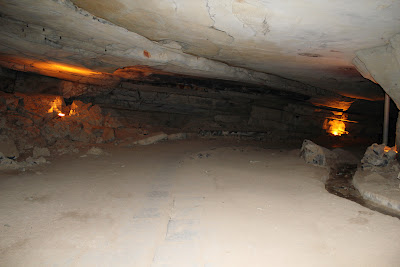Monday, 3 June 2013
Belum Caves
Belum Caves is the second largest cave in Indian subcontinent and the longest caves in plains of Indian Subcontinent, known for its stalactite and stalagmite formations. Belum Caves have long passages, spacious chambers, fresh water galleries and siphons. It is a natural underground cave formed by the constant flow of underground water. The caves reach its deepest point (150 feet from entrance level) at the point known as Pataalaganga. Belum Caves derives its name from "Bilum" Sanskrit word for caves.[1] In Telugu language, it is called Belum Guhalu. Belum Caves has a length of 3229 metres, making it the second largest natural caves in Indian Subcontinent.
Originally discovered in 1884 by a British surveyor Robert Bruce Foote, later in 1982-84, a team of German speleologists headed by H Daniel Gebauer conducted a detailed exploration of the caves. Thereafter in 1988, the state government declared them protected, and Andhra Pradesh Tourism Development Corporation (APTDC) developed the caves as a tourist attraction in February 2002. Today, 3.5 km of the cave has been successfully explored, though only 1.5 km is open to tourists.[1] There are 16 different pathways, including the main entrance and there are deposits of Quartz in the caves. The caves are formed in Black Limestone.
Subscribe to:
Post Comments (Atom)























No comments:
Post a Comment